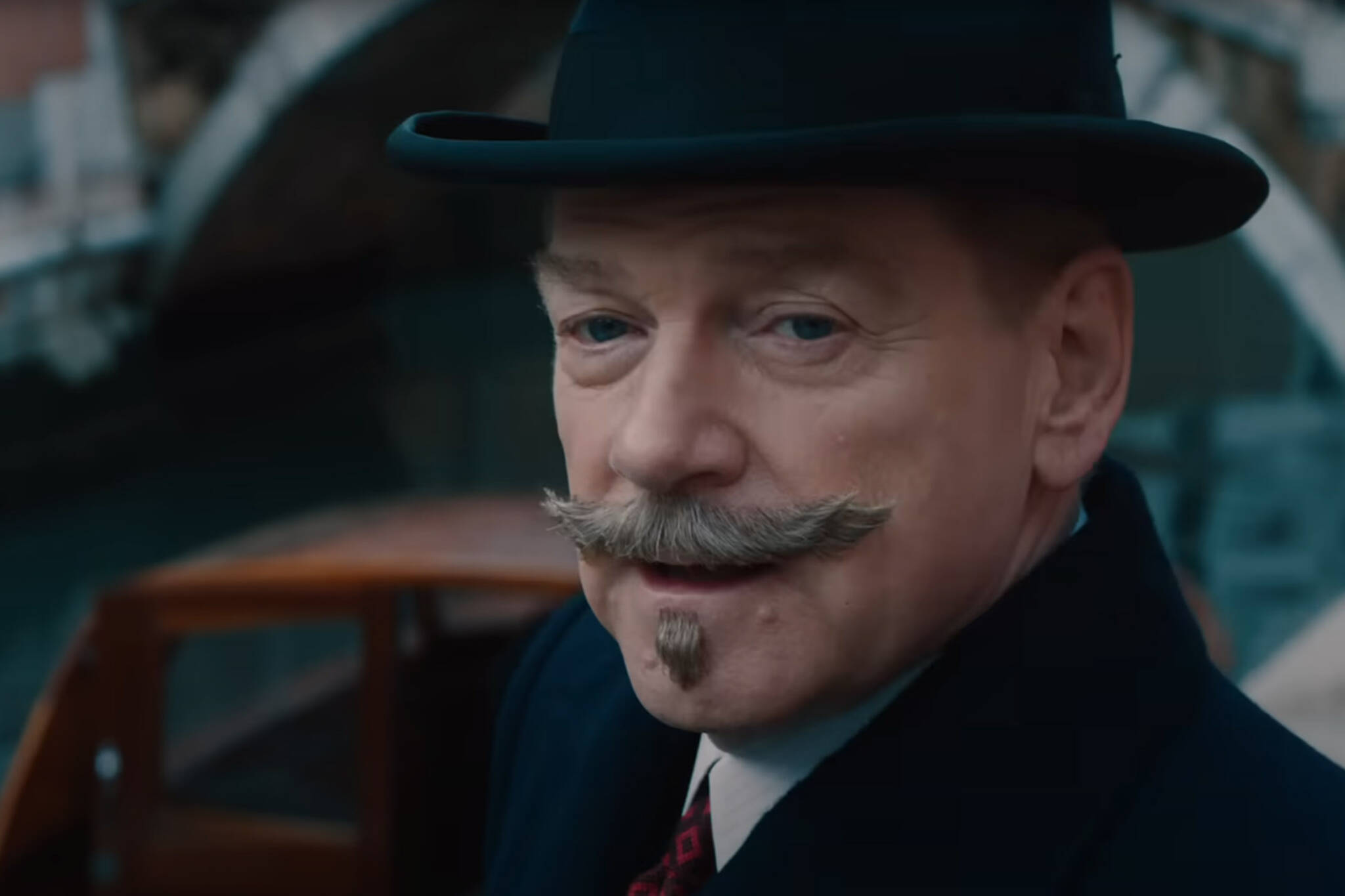In “A Haunting in Venice,” director Kenneth Branagh finally delivers a win for his take on Agatha Christie’s iconic Hercule Poirot, though it’s a shame it took three tries and six years to get here.
Following in the footsteps of 2017’s “Murder on the Orient Express” and 2022’s “Death on the Nile,” “A Haunting in Venice” again features Branagh in a sharp suit and wild mustache, solving complexly plotted murder cases in fanciful locales.
Unlike those previous films, which failed to make a strong impression, “A Haunting in Venice” quickly feels like a more confident and interesting step forward for the character and the director.
A big part of that is the tone. Just in time for the fall season, and as the title suggests, in “Haunting,” Poirot is faced with the possibility of a paranormal perpetrator — the film relishing in eerie imagery and techniques that would feel right at home in a horror flick.
In “Haunting,” a retired Poirot is lured out of hiding in Venice by Tina Fey’s Ariadne Oliver, an author who has based some of her works on his cases.
On Halloween night, the pair attend a seance at a Venetian palazzo, hosted by a renowned opera singer. Her daughter had, around a year ago, cast herself from the palazzo’s balcony and drowned in the canal — signs pointing to involvement by malevolent spirits inhabiting the old structure.
Poirot intends to discredit the medium, resolutely claiming that there’s no such thing as ghosts, but quickly finds himself solving a murder that perplexingly does indeed seem to feature the involvement of ghosts.
A stormy night keeps all the suspects trapped inside together, tensions building and relationships straining.
As Poirot unravels the mystery — to mostly satisfying ends — the film explores the weights of the past. Each character — including Poirot — carries with them some torment born of past experiences, mistakes or losses. The film explores guilt, grief and regret as they wear on its characters — the danger of being lost in the personal histories and failing to “make peace with ghosts.”
“Haunting” is, above all else, stylish. It revels in odd establishing shots, long leading lines and wide, dioramic shots that emphasize the vastness of the architectural spaces of the palazzo while also making the soaring walls feel claustrophobic.
The horror-flavored elements, especially, serve the story and the film well by increasing the pressures on Poirot and leaving him more vulnerable and interesting than in previous entries. The film reliably stays creepy rather than scary, but it makes for great seasonal viewing at this time of year.
The always great Michelle Yeoh delivers a delightfully strange performance, taking on a distinctly adversarial role against Poirot’s pragmatic worldview. Jude Hill, who plays a young boy in the film, was only 13 during filming, but delivers perhaps the film’s best performance as he takes care of his father — a man grappling with mental illness.
There’s a sense of originality and fun in “Haunting” that was previously missing in Branagh’s previous Poirot films. There’s a little extra spark in the eyes of Branagh’s eccentric investigator this time around. Especially as we enter October, as temperatures cool, and viewers are in the mood for some darker fare, “Haunting” will likely serve as a great counterbalance to more traditional horror films.
“A Haunting in Venice” is playing this weekend at Kenai Cinema and the Orca Theater. Check showtimes and get tickets at catheatres.com or orcatheater.com.
Reach reporter Jake Dye at jacob.dye@peninsulaclarion.com.

